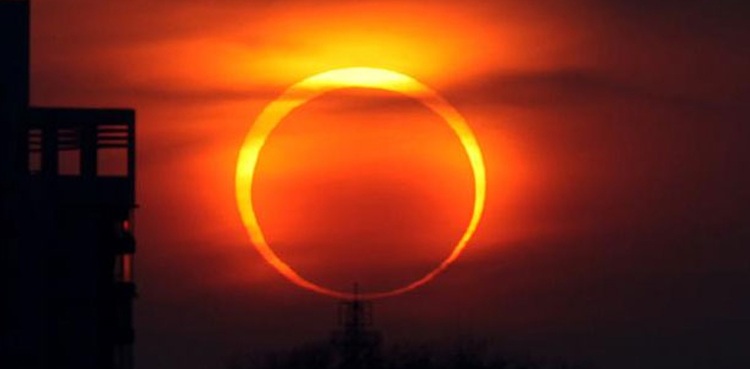Skywatchers along a narrow band from west Africa to the Arabian Peninsula, India, Pakistan and southern China will witness on Sunday the most dramatic “ring of fire” solar eclipse to shadow the Earth in years.
Annular eclipses occur when the Moon — passing between Earth and the Sun — is not quite close enough to our planet to completely obscure sunlight, leaving a thin ring of the solar disc visible.
They occur every year or two, and can only been seen from a narrow pathway across the planet.
Remarkably, the eclipse on Sunday arrives on the northern hemisphere’s longest day of the year — the summer solstice — when Earth’s north pole is tilted most directly towards the Sun.
The “ring of fire” will first be seen in the northeastern Republic of Congo at 5:56 local time (04:56 GMT) just a few minutes after sunrise.
This is the point of maximum duration, with the blackout lasting 1 minute and 22 seconds.
Arcing eastward across Asia and Africa, it will reach “maximum eclipse” — with a perfect solar halo around the Moon — over Uttarakhand, India near the Sino-Indian border at 12:10 local time (6:40 GMT).
More spectacular, but less long-lived: the exact alignment of the Earth, Moon and Sun will be visible for only 38 seconds.
“The annular eclipse is visible from about two percent of Earth surface,” Florent Delefie, an astronomer and the Paris Observatory, told AFP.
“It’s a bit like switching from a 500-watt to a 30-watt light bulb,” he added. “It’s a cold light, and you don’t see as well.”
A video of last year’s ‘ring of fire’ solar eclipse


Leave a Comment